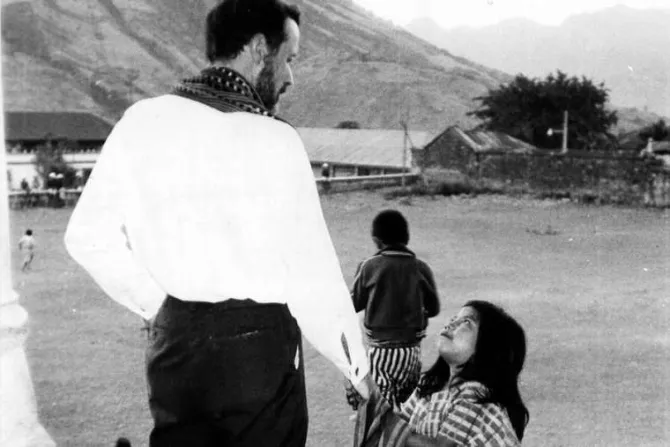Oklahoma City, Okla., Nov 6, 2019 / 13:55 pm
Archbishop Paul Coakley of Oklahoma City broke ground Sunday on what will be the largest Catholic church in the state- the Blessed Stanley Rother Shrine, meant to honor a late Oklahoma priest on the path to sainthood.
"What we are about to construct here we are building for the honor and glory of God whose goodness, whose holiness, whose faithfulness, whose mercy is shown through the life of Father Stanley Rother," Archbishop Coakley said during his Nov. 3 homily.
Rother was born in 1935 in Okarche, Oklahoma, about 40 miles northwest of Oklahoma City. He graduated from Mount St. Mary's Seminary in Maryland and was ordained a priest of the Diocese of Oklahoma City and Tulsa in 1963.
Five years after his ordination, Fr. Rother accepted an invitation to join the mission team at Santiago Atitlan, Guatemala, a poor rural community of mostly indigenous people.
Rother served the people of the parish during the Guatemalan civil war. He briefly returned to his home state of Oklahoma after a death threat, but soon went back, knowing the dangers of doing so.
Rother was martyred in his rectory in the early morning hours of July 28, 1981 by men involved in the civil war who were attempting to kidnap him at gunpoint.
Coakley on Sunday blessed the cornerstone of the planned Spanish-style colonial shrine, the ground where the future main altar will be located, as well as the area where Blessed Rother will be entombed.
Most of Rother's body is buried in Okarche, but his heart remained in Guatemala and became a relic upon his beatification.
Funds for the $40 million shrine come in large part from the archdiocese's first ever capital campaign. The site will include a 2,000-seat church, a chapel where Rother's body will be entombed, an education building, an event space and several areas designated for shrines and devotion, according to the archdiocese.
Also in attendance at the ceremony were Oklahoma City Mayor David Holt, Archbishop Emeritus Eusebius Beltran, Tulsa Bishop David Konderla and Little Rock Bishop Anthony Taylor, along with nearly 2,000 priests, deacons and laypeople.
The shrine will host many large diocesan events and will help accommodate the growing Hispanic population whose parishes are significantly overcrowded, the archdiocese says.
The Oklahoma City archdiocese opened Rother's cause for canonization in 2007, and Pope Francis recognized Rother as a martyr in 2016. His Rite of Beatification took place Sept. 23, 2017, in downtown Oklahoma City with more than 20,000 people in attendance.
Rother is the first martyr from the United States and the first U.S.-born priest to be beatified, the archdiocese says.
Rother was, according to those who knew him, a quiet man who struggled with academics at times. He was well-suited for missionary life and was much-beloved by the Tz'utujil indigenous people he served, who called him "Padre Apla's."
The fruits of Rother's service in Guatemala are still apparent, Coakley and others have told CNA.
Rother helped to translate the Bible into the native language, organizing a team to translate the New Testament so they could read it at Mass. That translation is still used to this day.
(Story continues below)
He also helped to build schools, hospitals, wells, and a Catholic radio station.
"The Catholic community in Santiago Atitlan is incredibly vibrant and active. I've never seen as many altar servers as they have at each Sunday Mass in Santiago – it's incredible," said Father Josh Mayer, a priest of the Diocese of Gallup who visited Rother's mission in Guatemala for his feast day last summer.
"The Eucharistic Ministers and lectors and catechists and other ministry groups are all incredibly well organized and everyone takes their roles very seriously. The people are very proud of what they do for Jesus and His Church. Every time I visit the parish of Santiago Apostol [St. James the Apostle], I'm inspired with a vision of what we could do at our parishes back home."


